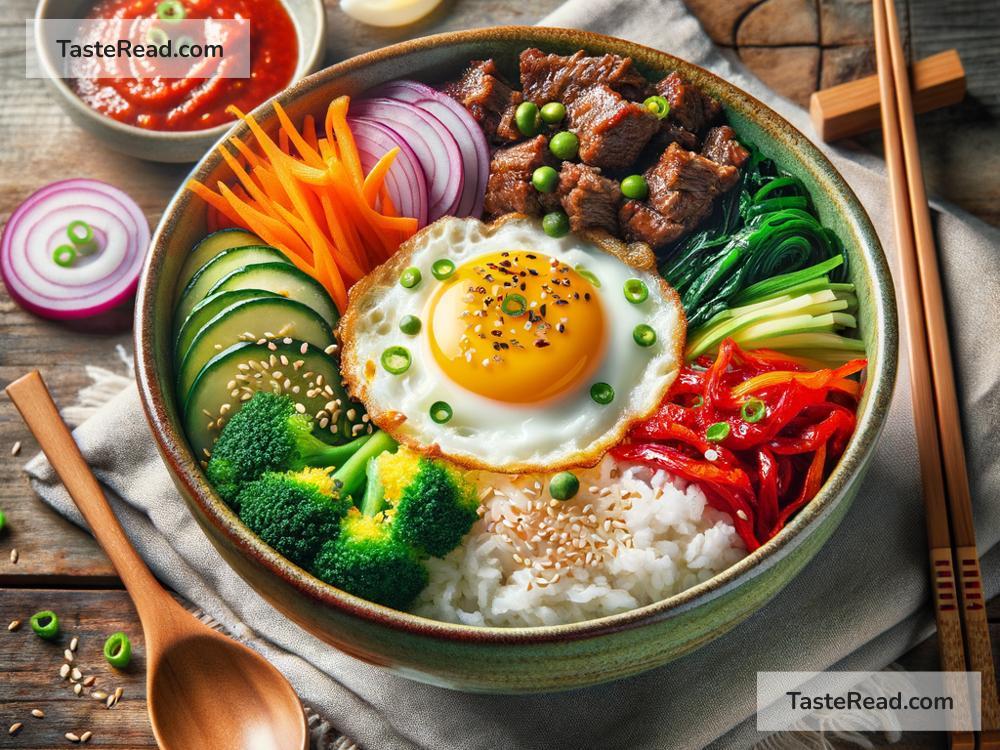Exploring the Origins of the Korean Bibimbap: A Culinary Adventure
Delve into any aspect of Korean culture, and one thing becomes abundantly clear: food isn’t just food; it’s an immersive experience that ties together history, tradition, and a sense of communal belonging. Among the numerous dishes that have put Korean cuisine on the global map, Bibimbap stands out. This dish isn’t merely a meal but a colorful palette of flavors and textures that symbolize the diversity and richness of Korean gastronomy. Let’s embark on a journey to unearth the origins of Bibimbap and understand why it holds a special place in the hearts of many.
The Name Says It All
In Korean, “Bibimbap” is a combination of three words: “bibim,” meaning “mixed,” and “bap,” meaning “rice.” At its core, Bibimbap is exactly that – a mix of rice with various ingredients. However, to appreciate Bibimbap fully, one needs to understand the philosophy behind it: harmony and balance. Each ingredient in Bibimbap is selected and prepared to contribute not only its unique flavor and texture but also its color, ensuring the dish is as pleasing to the eye as it is to the palate.
A Dish Born from Necessity
The origins of Bibimbap are as humble as they are practical. The dish is believed to have been born out of necessity, offering a solution to avoid wasting leftovers. Historical references suggest that on the eve of the lunar new year, Korean households would mix their leftover side dishes from the past year with rice, creating a simple yet satisfying meal. This tradition symbolized starting the new year with a clean slate, both metaphorically and literally, by clearing out all the old dishes.
A Royal Feast
Bibimbap’s simplicity does not, however, confine it to the realm of home cooking. The dish has also been traced back to the royal courts of the Joseon Dynasty. In this context, Bibimbap was more than a practical meal; it was a culinary representation of the kingdom, with the ingredients strategically chosen to symbolize different regions of Korea. This royal version of Bibimbap was a feast for the senses, with an array of colors and tastes that mirrored the diversity of the country’s landscape.
The Spirit of Jeonju
No discussion of Bibimbap would be complete without mentioning Jeonju, a city in South Korea often hailed as the birthplace of this iconic dish. The Jeonju version of Bibimbap is renowned for its intricate balance of flavors and the use of over 30 different ingredients, including the region’s famous bean sprouts, fernbrakes, and the indispensable gochujang (Korean chili paste) that adds a spicy kick to the dish. This variation elevates Bibimbap from a simple rice dish to a gourmet experience that encapsulates the essence of Korean culinary art.
A Global Delight
Today, Bibimbap is more than just a staple of Korean cuisine; it’s a global sensation. From high-end restaurants in major cities to food trucks at local festivals, Bibimbap has found its way into the hearts (and stomachs) of people around the world. Its appeal lies in its versatility; Bibimbap can be customized to cater to different dietary preferences, making it a beloved choice for vegetarians, meat-lovers, and spice enthusiasts alike.
Conclusion
The story of Bibimbap is a testament to the power of simplicity, versatility, and tradition. As we explore the origins of this beloved Korean dish, we’re reminded of the ways in which food can connect us to history, to culture, and to each other. Bibimbap, with its humble beginnings and royal connections, embodies the spirit of Korean cuisine: a celebration of diversity, harmony, and the simple joy of a meal shared. In every bowl of Bibimbap, we find a delicious blend of Korea’s past, present, and future, inviting us to savor not just the flavors on our tongue but the rich tapestry of stories that make up the fabric of Korean culture.


